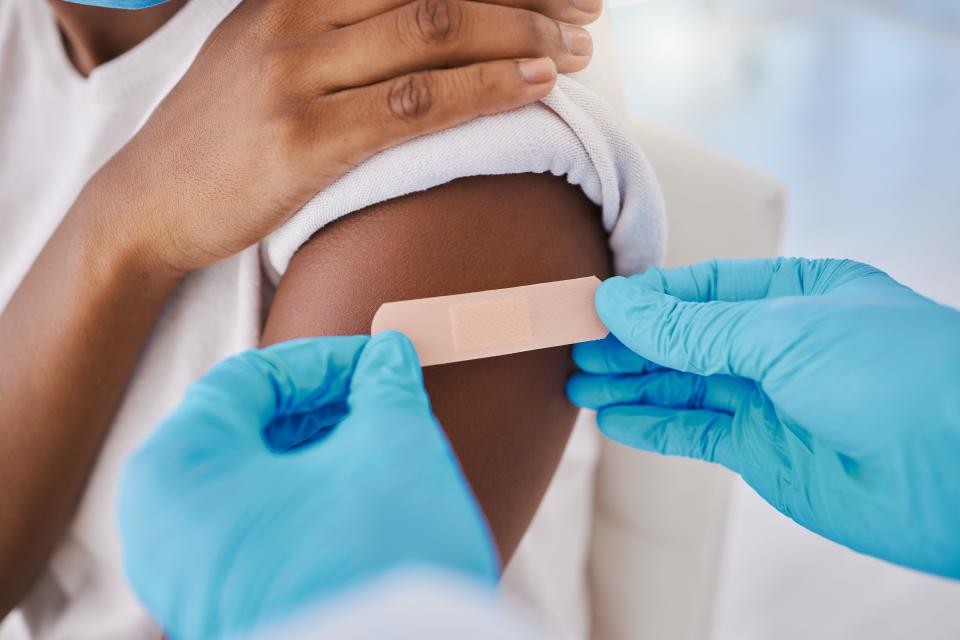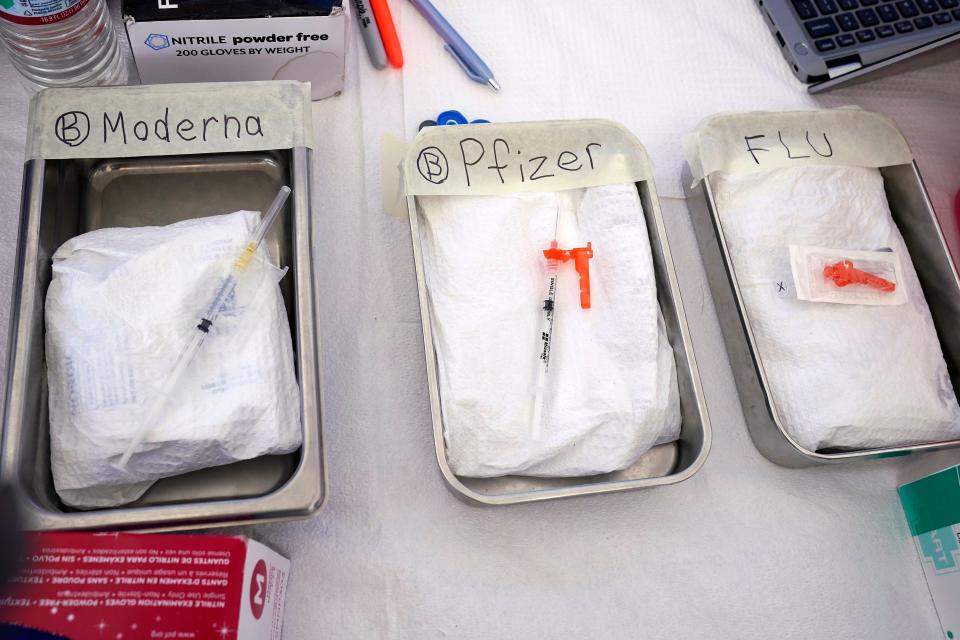What's the future of COVID boosters? FDA vaccine panel moves toward simplifying shots.
A federal advisory panel Thursday discussed ways to simplify and routinize COVID-19 vaccines more than two years after the first shots became available.
Well over 90% of the American public has now been infected, vaccinated or both, meaning that the level of protection against severe disease is vastly different than it was when vaccines were first introduced in December 2020.
With vaccines and boosters authorized incrementally for different vaccines and different age groups as the SARS-CoV-2 virus continued to evolve, there are now more than a dozen vaccines and schedules, the Food and Drug Administration's Dr. David Kaslow said in opening the panel's all-day meeting.
The FDA hopes to simplify vaccine options and provide a process for updating the shots at least once a year to cope with the continued presence and evolution of SARS-CoV-2.
PREVIOUSLY: FDA vaccine panel to consider annual COVID shots: What we know
Most of the committee's discussion was aimed at informing the FDA, rather than providing formal direction. Any changes in vaccine policy will need to be ratified by the FDA commissioner. Implementation of the strategy requires a meeting of a second advisory panel and approval by the director of the Centers for Disease Control and Prevention.
Here are the major topics discussed at the meeting of the Vaccines and Related Biological Products Advisory Committee:

One vaccine target for everyone
The committee took only one formal vote Thursday, unanimously supporting a shift to a consistent vaccine target, regardless of how many shots a person has had.
Right now, someone who is getting vaccinated for the first time receives a vaccine targeted solely at the original SARS-CoV-2 virus, while boosters are aimed at both the original virus and the BA.4/BA.5 omicron variants.
If approved by the FDA commissioner, as expected, all shots would target the same variants going forward.
VACCINES: COVID vaccines are holding up against highly contagious XBB variant, CDC finds
NEW DATA: How often do you need a COVID booster shot?
Scheduling of boosters
The FDA asked the committee to consider whether boosters should be offered annually to healthy, young people and twice a year to people who are older or immune-compromised.
The committee did not make a final recommendation on precisely who should be eligible for twice-yearly shots. Data has suggested that people over 75 are particularly vulnerable to severe COVID-19 infections, though the risk starts to rise around age 60.
Also, the risk is not consistent across all people with immunocompromising conditions. Someone with diabetes might have a mildly elevated risk, while a person undergoing treatment for blood cancer that destroys certain immune cells would be at much higher risk for severe disease, noted the FDA's Dr. Peter Marks.
Several committee members emphasized that the focus of COVID-19 vaccination should be on preventing severe disease, not all infections. Tetanus vaccines, for instance, do a good job of preventing disease, but not infection, said committee member Dr. Arthur Reingold, an epidemiologist at the University of California, Berkeley.
DOJ: Utah plastic surgeon sold fake COVID vaccination cards, destroyed vaccines
FACT CHECK: COVID-19 vaccination decreases chances of hospitalization, contrary to post's implication
Updating the vaccine composition
The committee discussed the timing of updates to an annual vaccine, as well as how to target one or multiple variants that might post the most risk.
An annual vaccine would likely become available each fall, ahead of what is typically a spike in respiratory viruses in early winter when people gather and spend more time indoors.
Executives with both Pfizer-BioNTech and Moderna said they can have a vaccine ready by September if told in late spring which variants to target. Novavax said it needed a six-month head start, which might prompt the FDA to move decisions earlier in the year.
In terms of choosing which variants to target, the committee discussed the difficulty of selecting a variant several months ahead of time for a constantly changing virus.
With the flu, cases six months earlier in Australia offer some insight into what might circulate in the U.S. the following winter, but there's been no such predictable guidance with COVID-19.
The BA.4/BA.5 variants chosen last summer to include in the current COVID-19 bivalent booster, for instance, now account for just a tiny fraction of cases in the U.S., replaced by BQ.1 and XBB and their subvariants.
Several committee members said they're not convinced that the original viral variant should continue to be a part of the vaccine, since it hasn't been in circulation in more than a year.

Safety and effectiveness
Studies from the FDA and researchers around the world support the effectiveness of a bivalent booster.
"All these studies point in the same direction that there is measurable additional benefit to the recommended booster vaccines," said Jerry Weir, who directs the Division of Viral Products within the FDA. "I find this pretty remarkable."
One study, but not others, suggested a possible increased risk of ischemic stroke among people over 65, particularly if they received their latest COVID-19 booster along with an annual flu shot designed for older people. The FDA promised a more thorough analysis of the data before the next flu season.
Several public speakers said they had been injured by their vaccinations and officials said that rare severe reactions are possible. Overall, though, data shows that the vaccines remain safe and that they substantially reduce the risk of hospitalization and death.
Contact Karen Weintraub at kweintraub@usatoday.com.
Health and patient safety coverage at USA TODAY is made possible in part by a grant from the Masimo Foundation for Ethics, Innovation and Competition in Healthcare. The Masimo Foundation does not provide editorial input.

This article originally appeared on USA TODAY: Future of COVID boosters: FDA panel moves toward simplifying shots

 Yahoo Movies
Yahoo Movies 